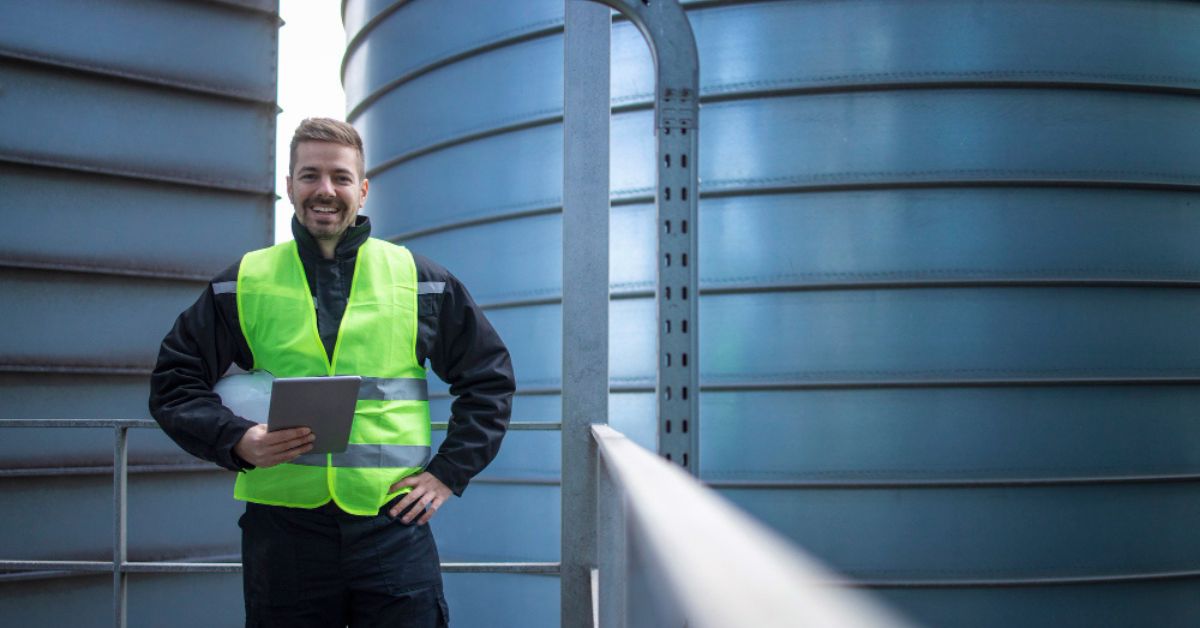General
The Different Types of Water Storage Tanks: Which One Is Right for You?

Water is one of the most critical resources in our daily lives, whether for domestic, agricultural, or industrial use. As climate patterns shift and water supply reliability becomes more unpredictable, water storage solutions are increasingly important. Fortunately, there are a variety of water storage tanks designed to meet different needs and environments.
In this article, we’ll explore the most common types of water storage tanks, explain why you might need one, and help you choose the best option for your circumstances.
Why Do You Need a Water Storage Tank?
Before we dive into the different types, it’s essential to understand the reasons for installing a water storage tank. Here are some of the most common motivations:
- Water Security: Having a dedicated tank ensures a consistent water supply during shortages or outages.
- Rainwater Harvesting: Collecting and storing rainwater reduces dependence on municipal supplies and lowers utility bills.
- Agricultural Use: Farms often require large volumes of water for irrigation and livestock.
- Emergency Preparedness: In areas prone to natural disasters, stored water can be a lifesaver.
- Fire Protection: Rural and remote properties use storage tanks to provide a reliable water source for firefighting.
Whatever your reason, selecting the right tank is key to ensuring optimal performance and value for your investment.
Common Types of Water Storage Tanks
There are several types of water storage tanks available, each suited to different purposes. Here are the most common types:
1. Polyethylene (Plastic) Tanks
- Description: Lightweight and corrosion-resistant, plastic tanks are among the most popular for residential use.
- Pros: Easy to install, affordable, UV-resistant options available.
- Cons: Less durable than metal or concrete in extreme conditions.
- Ideal For: Rainwater harvesting, household use, and short-term storage.
2. Steel Tanks
- Description: Made from galvanised or stainless steel, these tanks are known for their strength and longevity.
- Pros: Durable, UV resistant, can be modular.
- Cons: Heavier, more expensive, may require liners for potable use.
- Ideal For: Rural properties, industrial use, long-term storage.
3. Concrete Tanks
- Description: Extremely durable and often built on-site, concrete tanks can last for decades.
- Pros: Long lifespan, maintains water temperature, low maintenance.
- Cons: Expensive, difficult to relocate, susceptible to cracking over time.
- Ideal For: Large-scale or permanent installations.
4. Fibreglass Tanks
- Description: Resistant to corrosion and lightweight, fibreglass tanks are suitable for above or below ground.
- Pros: Non-corrosive, durable, UV resistant.
- Cons: More costly than plastic, can be brittle.
- Ideal For: Chemical storage, saline water, and extreme conditions.
5. Bladder Tanks (Flexitanks)
- Description: Flexible tanks made from high-strength fabric that expand as they fill with water.
- Pros: Portable, easy to store when not in use, quick installation.
- Cons: Not ideal for long-term storage, puncture risk.
- Ideal For: Temporary storage, remote locations, emergency use.
6. Underground Tanks
- Description: Installed below ground, these tanks save space and are hidden from view.
- Pros: Space-saving, temperature-controlled, protected from UV rays.
- Cons: Expensive installation, difficult access, potential for groundwater contamination.
- Ideal For: Urban areas, properties with limited space.
Choosing the Right Tank for Your Needs
Selecting the best water storage tank depends on several factors. Here are some key considerations:
1. Purpose
Are you storing drinking water, irrigation water, or something else? This will dictate the material and size of your tank.
2. Capacity
Estimate how much water you need daily and consider your reserve needs during dry seasons or emergencies.
3. Space Availability
Above-ground tanks require adequate space and accessibility. If space is limited, an underground or bladder tank may be better.
4. Climate and Environment
Consider temperature extremes, exposure to UV rays, and risk of corrosion or freezing. Some materials perform better in harsh environments.
5. Budget
Plastic tanks are affordable, while concrete and steel options are more costly but longer-lasting. Consider long-term costs including maintenance.
6. Regulations
Check local laws and building codes for tank installation. Some areas have strict requirements, especially for potable water.
Smart Water Tank Level Indicators
To get the most out of your water storage tank, consider installing a smart water tank level indicator. These devices use sensors to monitor the water level in real time and provide updates through smartphone apps or cloud-based platforms. Some systems can even send alerts when levels are low, detect leaks, and generate usage reports. This technology helps homeowners, farmers, and businesses optimize water usage, prevent overflows, and schedule refills more efficiently. In regions where water conservation is critical, smart indicators offer peace of mind and better control over water resources.
Conclusion
Water storage tanks are a practical and often essential solution for managing water resources effectively. Whether you’re looking to ensure a reliable supply, reduce your water bill, or prepare for emergencies, there’s a tank that suits your needs. By understanding the different types of tanks and assessing your specific requirements, you can make an informed decision and invest in a storage solution that will serve you well for years to come.
Frequently Asked Questions
What is the best material for a water storage tank?
The best material depends on your needs. For affordability and ease of installation, plastic is great. For durability and long-term use, steel or concrete are better. Fibreglass is ideal for corrosive environments.
What is the lifespan of different water tanks?
- Plastic Tanks: 10-15 years
- Steel Tanks: 20-30 years (with proper maintenance)
- Concrete Tanks: 30-50 years
- Fibreglass Tanks: 20-25 years
- Bladder Tanks: 5-10 years (depending on usage)
Can all types of tanks be used for drinking water?
Not all tanks are automatically safe for potable water. Look for tanks that are certified for drinking water use and ensure they are fitted with proper liners or coatings. Plastic, steel (with liner), and concrete tanks are commonly used for potable water.
Still not sure which tank is right for you? Consult with a local supplier or tank specialist to get advice tailored to your location and water needs.















